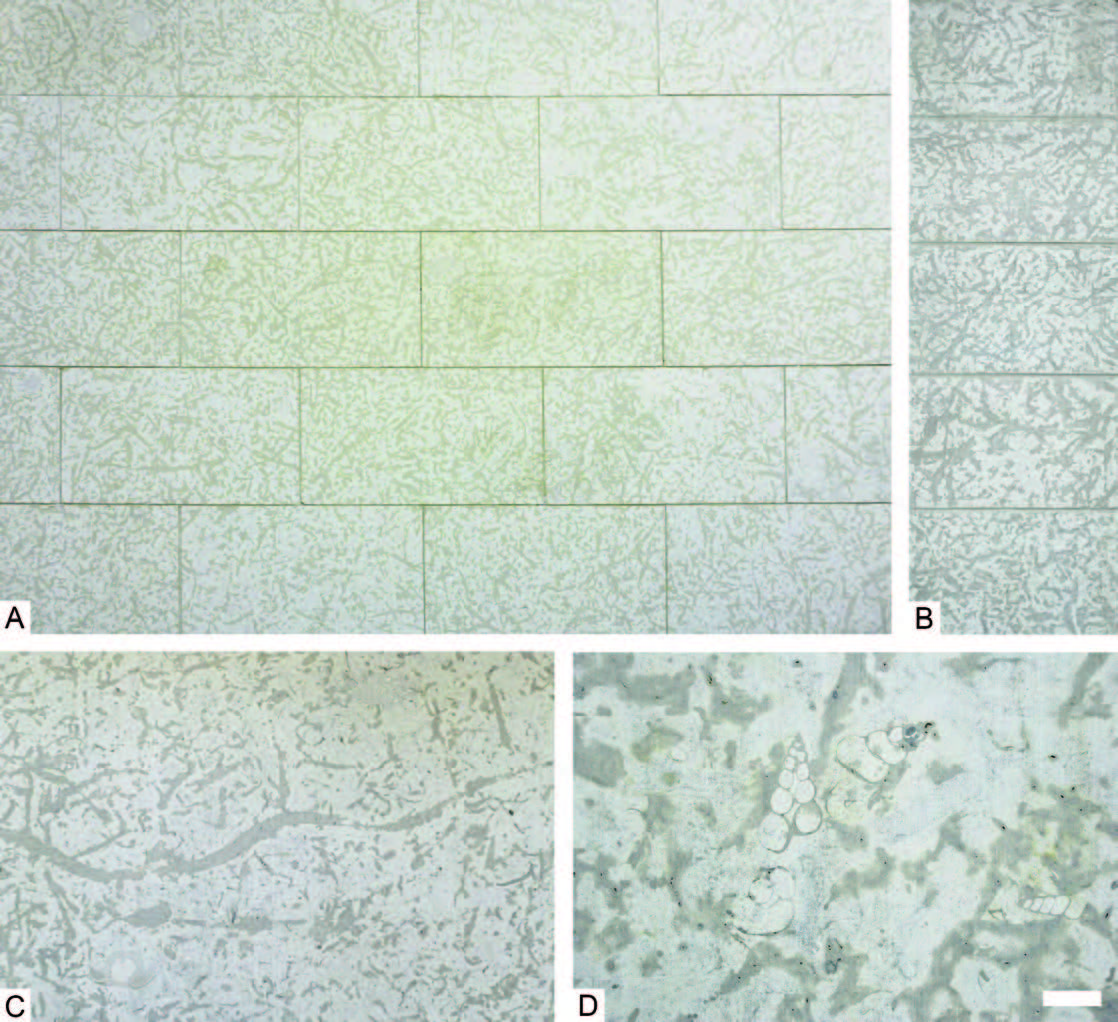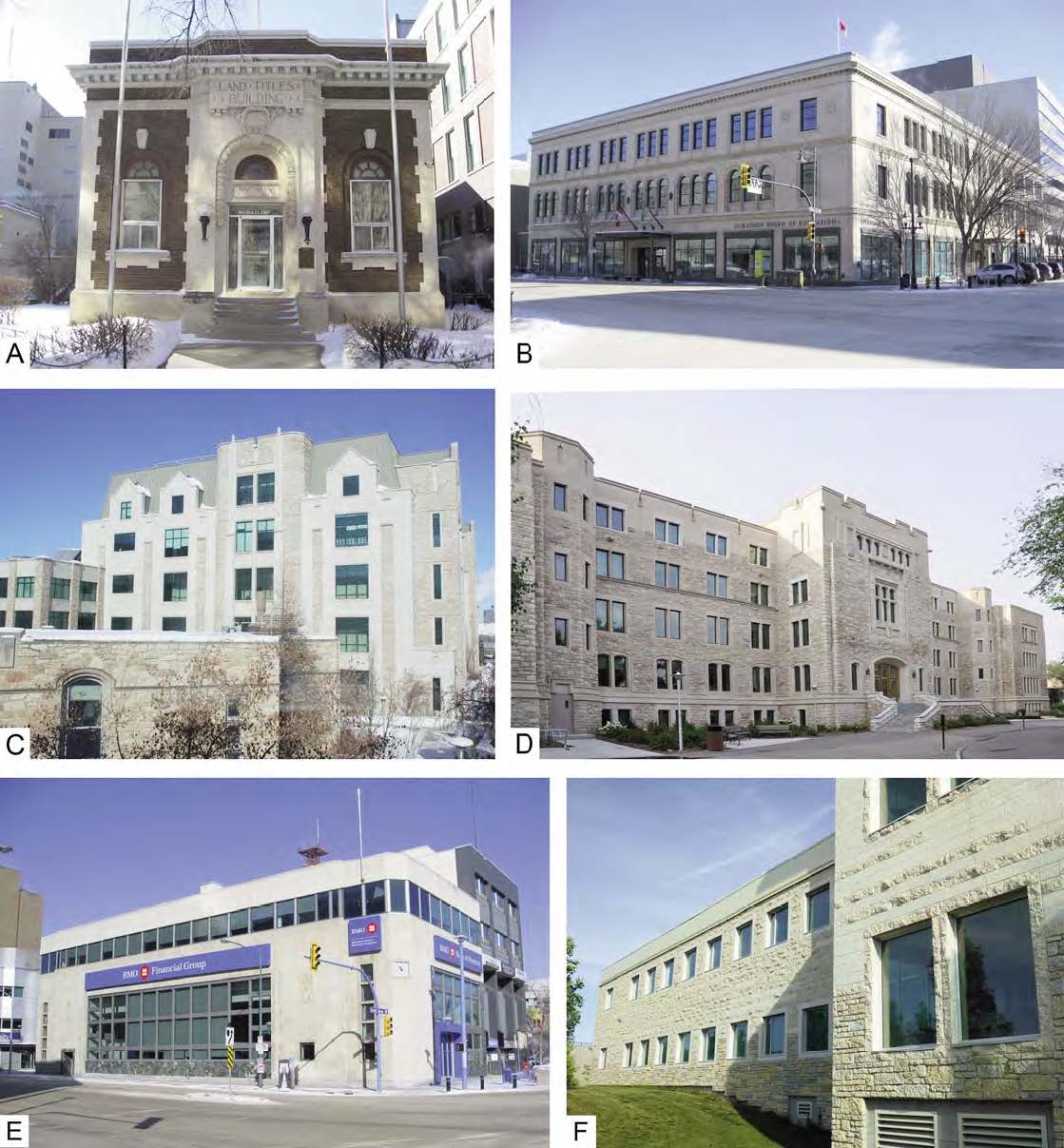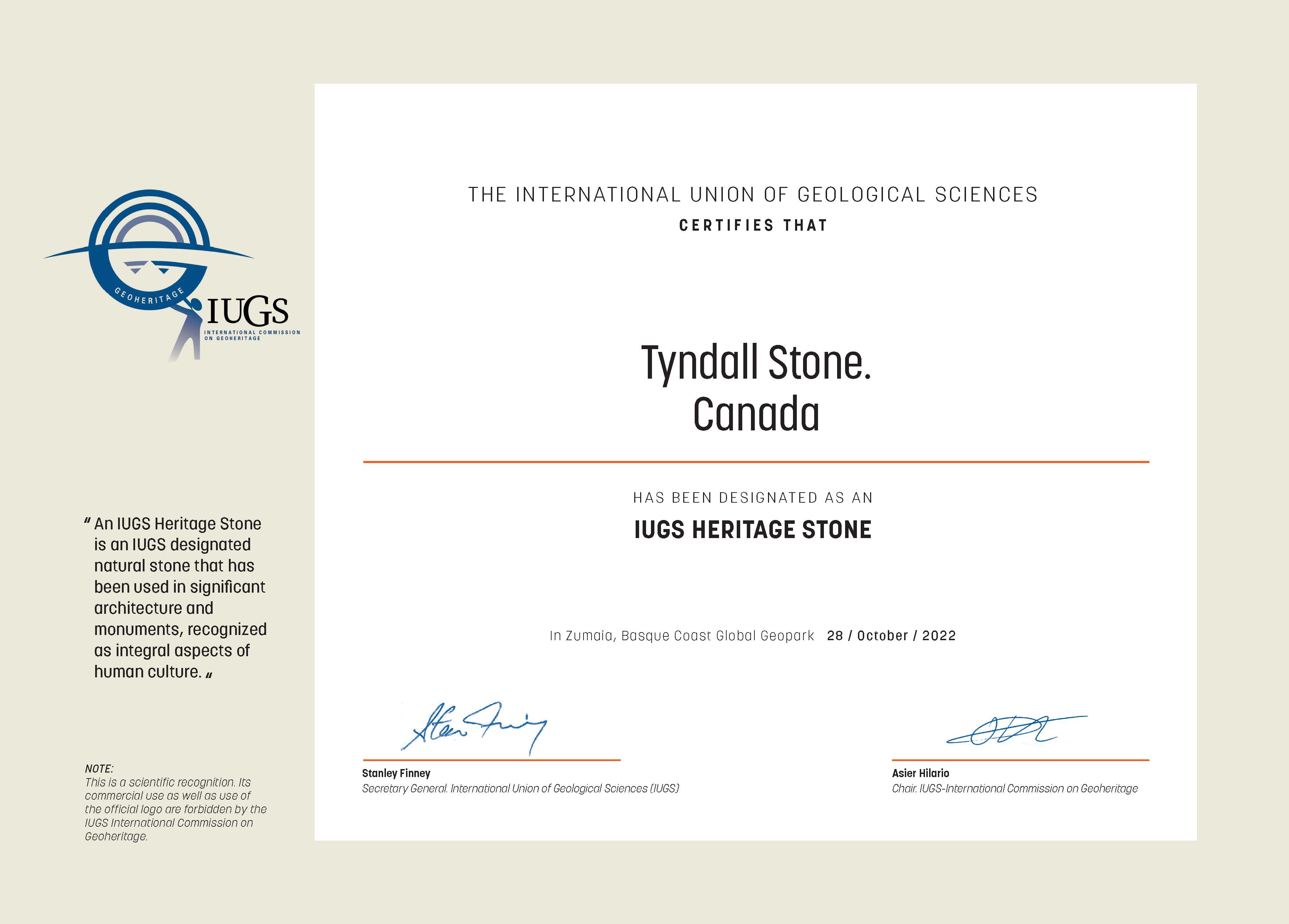Tyndall Stone
This image is a composite of Ordovician biotas from Red River and Stony Mountain formations showing columnar aulacerid sponge, elongate orthocone nautiloids, globular receptaculitid, gastropods (snails) and other benthic invertebrates at left, and crinoids (sea lilies), short nautiloids, rugose and tabulate corals and other invertebrates at right. Copyright Manitoba Museum.
About Tyndall Stone
Tyndall Stone is a distinctively mottled and strikingly fossiliferous dolomitic limestone that has been widely used for over a century in Canada, especially in the Prairie Provinces. It comprises 6–8 m within the lower part of the 43 m thick Selkirk Member of the Red River Formation, of Late Ordovician (Katian) age. It has been quarried exclusively at Garson, Manitoba, 37 km northeast of Winnipeg, since about 1895, and for the past half-century extraction has been carried out solely by Gillis Quarries Ltd.

Tyndall Stone Buildings Around Saskatoon
In the early years, Tyndall Stone was used almost exclusively in the Prairie Provinces of western Canada. Besides the Saskatchewan and Manitoba legislative buildings, it has been used in many other government buildings such as courthouses, post offices, land titles buildings, and city and town halls, as well as banks, department stores, train stations, office buildings, schools, and hotels.

Heritage Status
In October 2022, Tyndall Stone was designated a Global Heritage Stone Resource by the International Union of the Geological Sciences Subcommission on Heritage Stones. This was ratified and as of late 2022, Tyndall Stone is an IUGS Heritage Stone, Canada’s first.

Publication: Heritage Stone 9. Tyndall Stone, Canada’s First Global Heritage Stone Resource: Geology, Paleontology, Ichnology and Architecture
Brian R. Pratt* and Graham A. Young**
*Department of Geological Sciences, University of Saskatchewan, Saskatoon, Saskatchewan, S7N 5E2, Canada
**Manitoba Museum, 190 Rupert Avenue, Winnipeg, Manitoba, R3B 0N2, Canada

